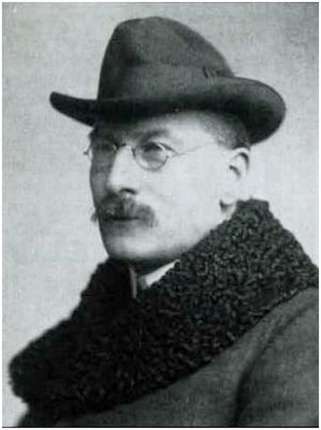Stewart Henbest Capper
- Born 15 December 1859, Upper Clapton Hackney,Londo
- Died 8 January 1925 at Anglo American Hospital Cairo Egypt
Stewart Henbest Capper was born in 1859 at Upper Clapton London, the third son of Jasper John Capper and Harriet Millington Jackson. His parents moved to Edinburgh when he was nine and from then he and his two brothers were educated at the Royal High School. He then matriculated at Edinburgh University at the age of sixteen where he gained a First Class Honours in Classics in 1880 after studying for a session at the University of Heidelberg.
In 1880 he joined the office of J Burnet & Son, Glasgow but a serious health condition forced him to accept later that same year a position as tutor to the only son of Sir Robert Morier, then British minister to Portugal and subsequently in Madrid. There he learned Portuguese and Spanish, studied Spanish architecture and made many lasting friendships. In 1884, he resumed the study of architecture by attending the Ecole des Beaux Arts, where he was a pupil of Jean Louis Pascal for four years. After further travelling in Europe, Capper returned to Edinburgh in 1887, working as assistant to Sir George Washington Browne until 1891. However, from 1888 he was also practising on his own account in partnership with his former fellow pupil of Pascal, Frank Worthington Simon. The newly formed partnership of Simon & Capper won the competition for Hope Chapel, Wigan, in 1888. On 8 June 1891, Capper was admitted ARIBA, his proposers being John James Burnet, William Leiper and Richard Phené Spiers. late in 1891 he had become associated with Professor Patrick Geddes - a biologist - who had founded the Town & Gown University Settlement with the object of creating staff and student residences within the Old Town of Edinburgh. The association between Geddes and Capper ended in 1896 when a temporary breakdown in health induced Capper to accept the position of first professor of architecture at McGill University in Montreal.
He returned to England in 1903 to establish the chair of architecture at Victoria University, Manchester; while his time there was academically successful the climate was not good for him. Capper resigned the Chair of Architecture at Manchester University on medical advice following a serious riding accident and pneumonia in 1912 and went abroad to recover his health. Manchester was only the fourth School of Architecture to be established at a university in the British Commonwealth, preceded only by those of the Universities of Toronto(1890) Liverpool (l894) and McGill (1896).
In Canada Capper had joined the Canadian Field Artillery reaching the rank of captain. When he moved to Manchester he secured a transfer of his commission to the volunteers there and organised the Officer Training Corps of the University with promotion to the rank of brevet major. When war came he joined his battalion and went to Egypt. Found unfit for the Gallipoli campaign, he was appointed military censor in Cairo for which purpose he learned Arabic. At the end of the war he was given a similar position in the European department of the Ministry of the Interior in Cairo, a post which he retained until his death from a heart attack in the Anglo American Hospital in Cairo on 8 January 1925. His funeral was attended by Lord Allenby and representatives of the Egyptian Government.
Residence
1909 337, Moss Lane East, Manchester.
1924 17 Sharia Antikkhaneh-el-Masriyeh, Cairo
Buildings and Designs
| Building Name | District | Town/City | County | Country |
|---|---|---|---|---|
| Student Union Building Manchester University | Chorlton-on-Medlock | Manchester | GMCA | England |
| Gymnasium Burlington Street for Manchester University | Chorlton-on-Medlock | Manchester | GMCA | England |
Partnerships
| Name | Designation | Formed | Dissolved | Location |
|---|---|---|---|---|
| Simon and Capper | Architectural practice | 1888 | 1889 | Edinburgh |
